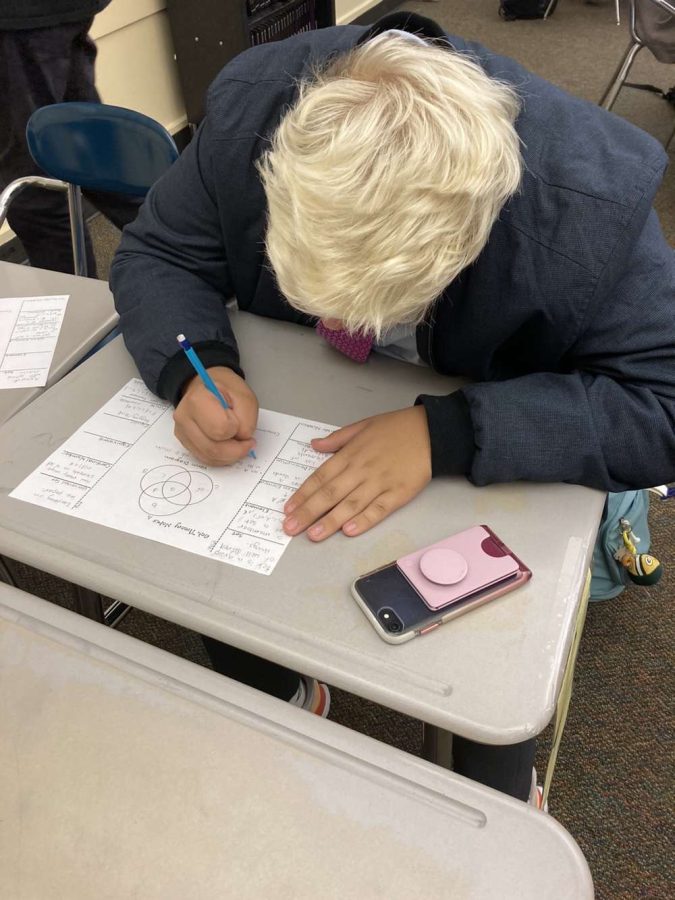Phones in class: should they be on the student or the teacher?
Maximus, a junior, resists the urge to get on his phone. Sometimes just have it out on the desk can be a distraction.
Can high school students self regulate? Can they account for their learning? Obviously, the answer depends on the student. Some kids can learn more than just the curriculum when phones aren’t taken away, because they also learn how to wisely use their time.
Mr. Deeder, for instance, doesn’t ever take away phones. At any point, you can walk into his classroom and see kids with their heads down to their screen. While it seems counterproductive to not take away the phones, he’s teaching his students how to allocate their scarce time and attention– a perfectly apt lesson for an econ class. On the other hand, Mr. Barkley makes kids check their phones in at the beginning of the period. He does this because the competition between a highly addictive device and a teacher just isn’t fair; as a teacher, he’s seen firsthand how easily students can be distracted.
Take Ella Milanovich, junior, for example: she is in Mr. Deeder’s AP Micro class, and Mr. Barkley’s AP Calc class. She says, “I like to use my phone as a learning tool. I use the calculator app on my phone, or I take pictures of stuff to remember. I do see both sides where you may want to take phones to eliminate distractions, but at the same time the kids that want to learn should be able to self regulate.”
Yes, it’s an unfair competition. Teachers simply can’t compete with algorithms that were crafted to be addictive. However, allowing students access to their phones will teach them the life long skill of self regulation and time management. Success is up to the student!












